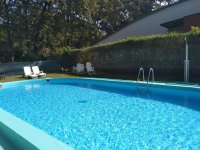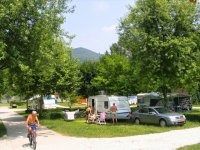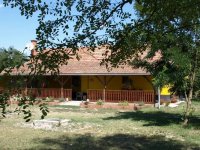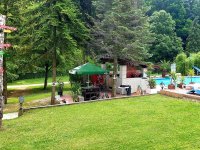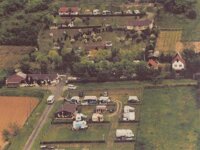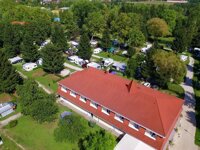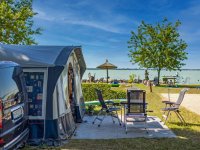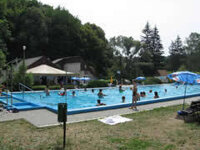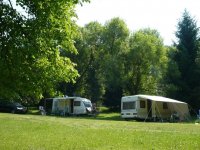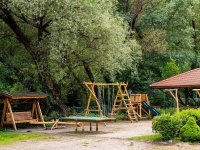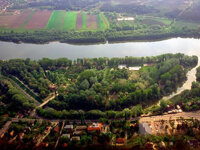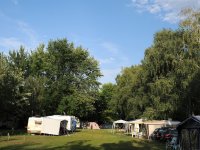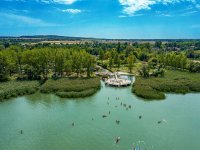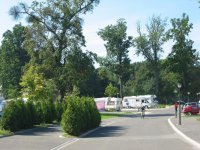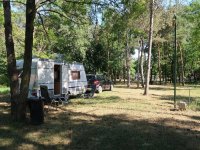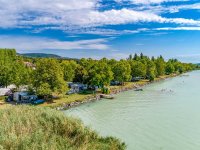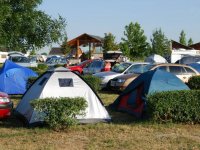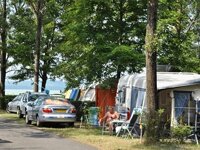Camping in Hungary
28 campsites in Hungary
Campsite Listing Google Map
The following consent is required:
Tracking & performance, Targeting & advertising.
Hungary
Situated at the heart of Europe, Hungary has a distinct identity that it maintains fiercely. Bordered by no fewer than seven countries, it has been at the centre of political upheaval throughout its history, but despite this, its rich heritage and customs continue to permeate its culture, particularly on festival days.
A camping holiday in Hungary will likely take you to Lake Balaton, Central Europe’s largest lake and a popular tourist destination. The silky green waters are ideal for water sports, and the southern shores are a great place to bathe. The thermal lake at Hévíz, west of Lake Balaton, is the world's second-largest hot water lake, with a temperature of 32°C and soothing properties. To the north is Badacsony, an extinct volcano with fossilised lava columns and vineyards on its slopes.
A festival is never far away when you’re camping in Hungary. Budapest has a range of events all year round, with diverse celebrations occurring between May and September. Of particular cultural interest are the Danube Carnival, taking place in June, which features traditional Hungarian folk dancers and a parade, and the Vajdahunyadvár Summer Festival, which takes place in July and August and presents classical music, swing and traditional Hungarian gipsy music.
Begin your search for campsites in Hungary here.
Unknown matrix block type: tableOfContents2!
Basic Information

Capital Budapest
Currency Hungarian Forint (HUF)
Language(s) Hungarian
Time Zones CET (GMT+1)
Summer (DST) CEST (UTC+02)
Telephone Code +36
Units Metric
EU Member Yes
Schengen Area Yes
Tourism Website visithungary.com
Hungary is a member of the European Union, and customs inspections are occasionally conducted on individuals and vehicles crossing the border to ensure compliance with Hungary's regulations.
Shopping

Shopping in Hungary can be an interesting experience. Many traditional items have been handcrafted here for hundreds of years, from fruit liquors, porcelain dolls, and paprika to confectionery. Hungary can be a shopper's paradise.
While in Hungary, you should try the traditional fruit brandy of Hungary called Palinka. Due to government regulations, this spirit cannot be found anywhere else in the world except Hungary.
Hungarians have made paprika their trademark and is one of the top things to buy in Hungary. Turkey brought Paprika into Hungary over 500 years ago, and since then, it has become a staple food item for the locals. Although paprika is mainly produced in the towns of Kalocsa and Szeged, every souvenir shop in the country has paprika for sale.
You can visit the famous Szamos Confectionary shop and buy chocolate-covered sweets, a unique marzipan confectionery coated with red syrup and shaped like a rose. Another unique food item in Hungary is the Mangalica Salami. Made from the Mangalica Pig, this salami is seasoned with, of course, paprika and various other herbs, making this a mouth-watering Hungarian delicacy.
Wooden Secret Boxes are hand-carved wooden boxes with detailed figures and inlaid patterns, but it is not about what the box looks like from the outside; it's about what it is hiding within. These boxes have hidden compartments and secret locks. These secret boxes are also called puzzle boxes and come in various sizes.
Hungarian dolls have been exhibited at museums around the world. Their beautiful costumes, delicate features and embroidered hats make them admired wherever they are shown. Hungarian dolls make a wonderful souvenir. These beautiful handmade dolls come dressed in traditional Hungarian peasant costumes or elegant, old-fashioned ball gowns. Their beautiful porcelain faces are hand painted, and their dresses' stitching, beading and embroidery are all done by hand.
Money in Hungary
Hungary's official currency is the Hungarian Forint (HUF). Many stores accept Euro as well. In each city around Hungary, you will find ATMs for money withdrawals that accept major debit or credit cards. You can also pay by debit or credit card in most shops and supermarkets; however, smaller shops and more remote villages may only accept cash, so carrying some money with you is advisable.
Public Holidays in Hungary
- New Year's Day: 1st January
- Revolution Day: 15th March
- Good Friday, Easter Sunday, Easter Monday, Pentecost Sunday & Pentecost Monday
- Labour Day: 1st May
- Saint Stephen's Day: 20th August
- Republic Day: 23rd October
- All Saints' Day: 1st November
- Christmas Day: 25th December
- Second Day of Christmas: 26th December
Please note Some dates are moveable, so please check before travelling.
Driving in Hungary
Visitors to Hungary who wish to drive in the country must comply with the following requirements:
- A valid driver's license: Visitors must have a valid driver's license from their home country.
- Car insurance: Visitors must have valid car insurance for their vehicle, covering both the driver and passengers.
- Road rules: In Hungary, you drive on the right and overtake on the left. Vehicles from the right, public transport and emergency vehicles have priority. The use of seat belts is mandatory for all occupants of a vehicle. Visitors must follow traffic laws, including speed limits, traffic signals, and road signs.
- Unless your headlights can be adjusted, headlamp converters are legally required (stickers for your headlights when driving on the right, so your lights don't dazzle motorists coming the other way). Dipped headlights must be on at all times, even on motorways. It’s illegal to use full-beam in built-up areas at night.
- Safety equipment: Warning Triangle to be used in the event of your vehicle breaking down to warn other drivers, First aid kit, Fire extinguisher, reflective jacket and spare external light bulbs.
- Minimum driving age: The minimum driving age is 18 years old.
- Alcohol law: In Hungary, there is a zero-tolerance policy on drink-driving, with the limit set at 0.00%.
- Hungary can experience severe winter weather conditions, so if you travel there at that time of year, you must ensure you use winter tyres.
- In built-up areas, the speed limit is 50km/h; a 30km/h limit is common in cities. On main roads, the maximum speed is 90-110km/h; on motorways it’s 130km/h.
Hungary Emergency Services
- Hungary's emergency number for life-threatening emergencies.
To access police, ambulance, fire brigade, search & rescue: 112 - Ambulance: 104
- Fire Service: 105
- Police: 107
Weather in Hungary
BUDAPEST WEATHERHungary has a typical continental climate with hot, dry summers and mildly cold, snowy winters.
Rain in Hungary is not abundant, but it is well-distributed throughout the year. During winter, rainfall is relatively frequent and often occurs in the form of snow or sleet, while from May to August, thunderstorms can break out during the afternoon.
The sun in Hungary is rarely seen in winter, while in the summer, it shines quite often. On average, there are nearly 2,000 hours of sunshine annually in the north and almost 2,200 hours in the south.
The average annual temperature is 9.7°C. The average high temperature in the summer is 23 to 28°C, and the temperature can climb above 35°C on the hottest days in July-August. The average low temperature in the winter is −3 to −7°C, and the temperature might drop below -10°C on the coldest of days.
The best periods to visit Hungary are spring and autumn, particularly May, June and September. The height of summer in July and August is generally a reasonable period as well, although it can sometimes be sweltering.
